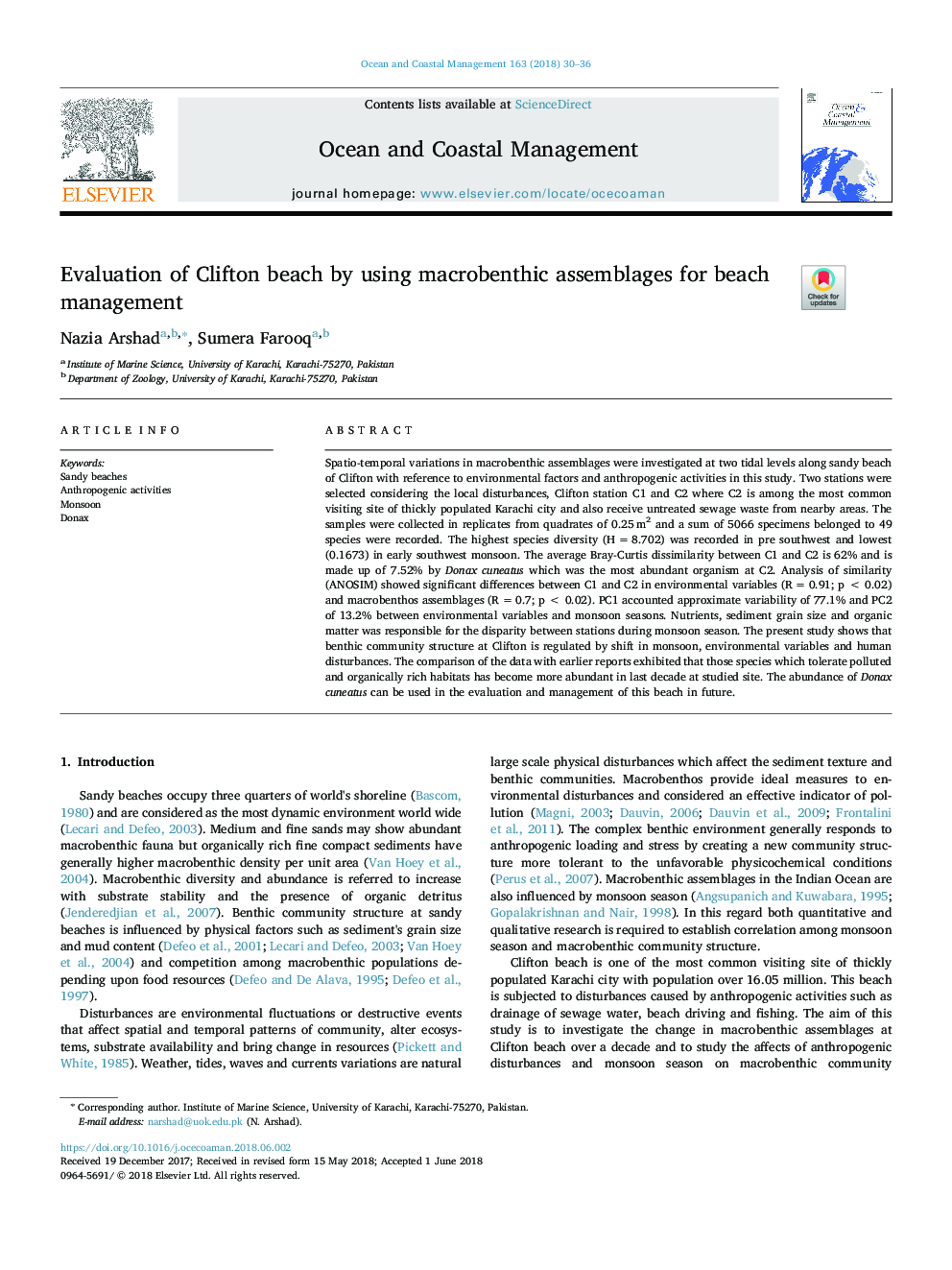| Article ID | Journal | Published Year | Pages | File Type |
|---|---|---|---|---|
| 8060501 | Ocean & Coastal Management | 2018 | 7 Pages |
Abstract
Spatio-temporal variations in macrobenthic assemblages were investigated at two tidal levels along sandy beach of Clifton with reference to environmental factors and anthropogenic activities in this study. Two stations were selected considering the local disturbances, Clifton station C1 and C2 where C2 is among the most common visiting site of thickly populated Karachi city and also receive untreated sewage waste from nearby areas. The samples were collected in replicates from quadrates of 0.25â¯m2 and a sum of 5066 specimens belonged to 49 species were recorded. The highest species diversity (Hâ¯=â¯8.702) was recorded in pre southwest and lowest (0.1673) in early southwest monsoon. The average Bray-Curtis dissimilarity between C1 and C2 is 62% and is made up of 7.52% by Donax cuneatus which was the most abundant organism at C2. Analysis of similarity (ANOSIM) showed significant differences between C1 and C2 in environmental variables (Râ¯=â¯0.91; pâ¯<â¯0.02) and macrobenthos assemblages (Râ¯=â¯0.7; pâ¯<â¯0.02). PC1 accounted approximate variability of 77.1% and PC2 of 13.2% between environmental variables and monsoon seasons. Nutrients, sediment grain size and organic matter was responsible for the disparity between stations during monsoon season. The present study shows that benthic community structure at Clifton is regulated by shift in monsoon, environmental variables and human disturbances. The comparison of the data with earlier reports exhibited that those species which tolerate polluted and organically rich habitats has become more abundant in last decade at studied site. The abundance of Donax cuneatus can be used in the evaluation and management of this beach in future.
Related Topics
Physical Sciences and Engineering
Earth and Planetary Sciences
Oceanography
Authors
Nazia Arshad, Sumera Farooq,
